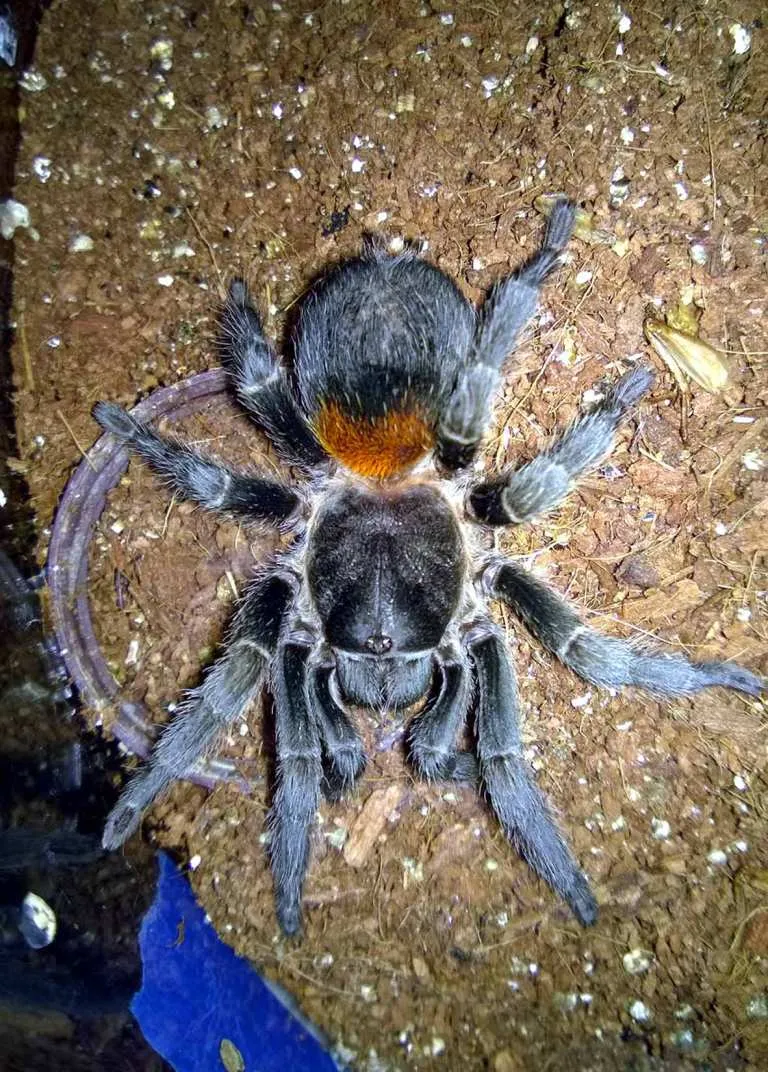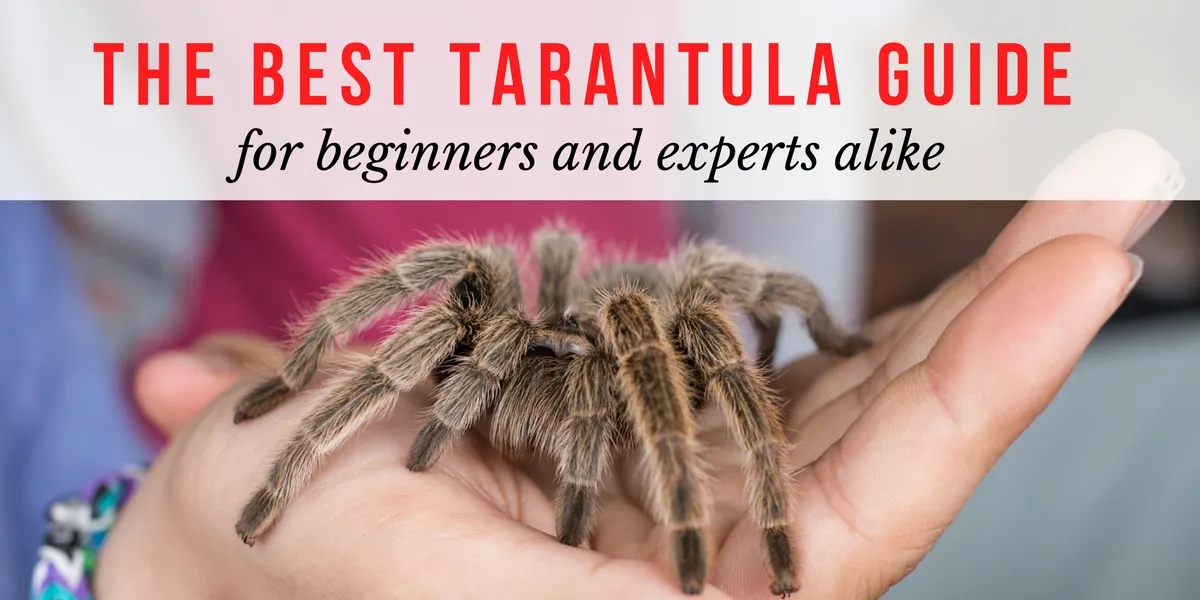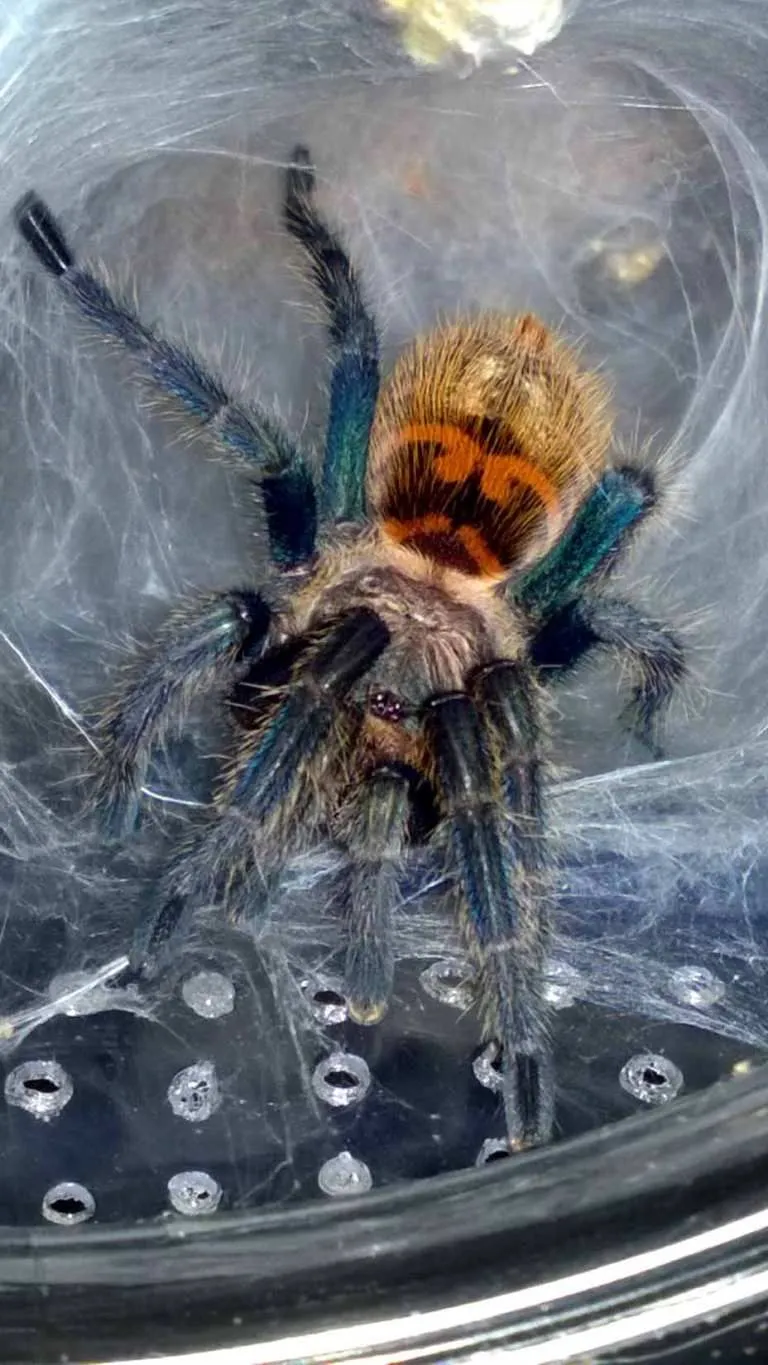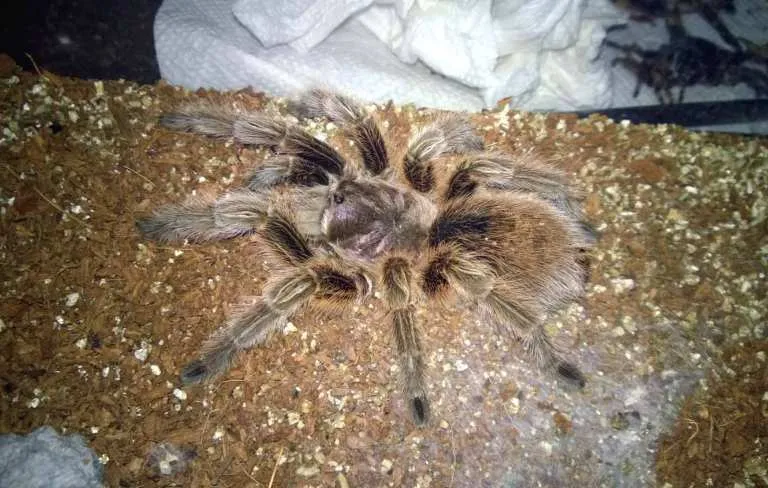Why Choose Tarantulas as Pets?
Tarantulas have gained popularity as exotic pets, captivating enthusiasts with their unique characteristics and relatively low-maintenance needs. Choosing a tarantula can be a rewarding experience, offering a fascinating glimpse into the world of arachnids. They are generally quiet and don’t require the same level of interaction as more common pets like dogs or cats, making them ideal for individuals with busy lifestyles or those seeking a less demanding companion. Their diverse appearances, from the vibrant colors of the Pinktoe tarantula to the striking patterns of the Mexican Red Knee, add an element of visual interest to any home. Owning a tarantula also provides an excellent opportunity to learn about biology, ecosystems, and the delicate balance of nature. Their care can be simple to manage, providing satisfaction to owners.
The Appeal of Tarantulas for Beginners
For beginners, the appeal of tarantulas lies in their accessibility and the manageable level of care they require compared to other exotic pets. Many tarantula species are docile and slow-moving, reducing the risk of bites and making them less intimidating to handle. The availability of information and resources online makes it easier than ever to learn about tarantula care, from habitat setup to feeding schedules. Their relatively long lifespans also mean that a pet tarantula can be a companion for many years, offering a consistent source of enjoyment and a unique pet ownership experience. They don’t require a lot of space, making them suitable pets for apartment dwellers or those with limited living areas. With a little research and preparation, owning a tarantula can be a rewarding and enriching experience for beginners.
Top 7 Beginner-Friendly Tarantula Breeds

Choosing the right tarantula breed is crucial for beginners. Several species are known for their docile temperaments, manageable care requirements, and overall suitability for new owners. This list highlights seven of the best tarantula breeds to start with, offering a range of sizes, colors, and personalities to suit different preferences. Each breed has its unique charm and care needs, but all are generally considered safe and relatively easy to care for, providing a positive first experience with tarantula ownership. Careful consideration of these breeds will ensure a smooth and enjoyable journey into the world of tarantula keeping, allowing beginners to learn and appreciate these fascinating creatures.
The Chilean Rose Hair Tarantula
The Chilean Rose Hair (Grammostola rosea) is often recommended as the quintessential beginner tarantula. Their docile temperament and slow movements make them easy to handle and observe. They are also relatively hardy, tolerating slight variations in temperature and humidity, and are known for their longevity, with females living for over 20 years. Their understated beauty, with a brown coloration and rose-colored hairs, adds to their appeal, and they are readily available and affordable. This combination of factors makes them an excellent choice for those just starting in the tarantula hobby, providing a low-stress, rewarding experience.
Appearance and Temperament
Chilean Rose Hair tarantulas are typically brown with pinkish hairs, creating a subtle yet attractive appearance. Their temperament is generally very docile, making them one of the most handleable tarantula species. They are not prone to biting, and their slow movements mean they are easy to manage. They are also relatively calm and often spend a lot of time just sitting, allowing for easy observation.
Habitat and Care Requirements

These tarantulas require a simple setup. A 10-gallon terrarium is usually sufficient for an adult. Provide a substrate of coco fiber or peat moss, a shallow water dish, and a hide, such as a cork bark. Maintain a temperature between 70-85°F (21-29°C) and a humidity level of around 60-70%. Feed them appropriately sized insects like crickets or mealworms once or twice a week. They require minimal maintenance and are therefore a great choice for beginners.
The Mexican Red Knee Tarantula
The Mexican Red Knee (Brachypelma hamorii), known for its striking red and black coloration, is another popular choice. These tarantulas are known for their docile nature and are relatively easy to handle. Their beautiful appearance and generally calm demeanor make them a favorite among hobbyists. They are relatively hardy and adaptable to various conditions, making them suitable for beginners who want a visually striking pet. The Mexican Red Knee’s popularity ensures that they are readily available and well-documented in terms of care requirements.
Appearance and Temperament
The Mexican Red Knee is easily recognizable by its black body and vibrant red markings on its leg joints. Their temperament is typically docile, though they can be skittish and may flick urticating hairs as a defense mechanism. They are generally calm and slow-moving, making them easier to manage than some other species. They are generally not aggressive and rarely bite.
Habitat and Care Requirements

A 10-20 gallon terrarium is suitable for adult Mexican Red Knees. Provide a substrate of coco fiber or peat moss, a water dish, and a hide. Maintain a temperature between 70-85°F (21-29°C) and a humidity level of around 65-75%. Feed them insects such as crickets, roaches or mealworms. These tarantulas are low-maintenance and benefit from regular cleaning.
The Arizona Blonde Tarantula
The Arizona Blonde (Aphonopelma chalcodes) is another excellent option, known for its calm nature and relatively low care requirements. These tarantulas are native to the southwestern United States, where they are known for their docile temperaments. Their striking appearance, with a light brown or tan coloration, adds to their appeal, and they are known for their longevity, often living for many years. They are also relatively hardy and are, therefore, a good choice for beginners.
Appearance and Temperament
Arizona Blondes have a light brown or tan coloration, which provides a visually appealing aesthetic. Their temperament is generally calm and docile, making them one of the less defensive species. They are usually not prone to biting and are relatively easy to handle with care. They are not known for being aggressive.
Habitat and Care Requirements

Adult Arizona Blondes can be housed in a 10-20 gallon terrarium. Provide a substrate of coco fiber or peat moss, a water dish, and a hide. Maintain a temperature between 70-85°F (21-29°C) and a humidity level of around 50-60%. Feed them insects like crickets and roaches. These tarantulas are generally easy to care for, requiring a simple setup.
The Pinktoe Tarantula
The Pinktoe (Avicularia avicularia) is a visually stunning arboreal species that is well-suited for beginners. Known for its pink toe pads and arboreal lifestyle, this tarantula offers a unique and rewarding experience. They are generally docile and relatively easy to care for, making them a great choice for those wanting a more visually appealing tarantula. Their arboreal nature requires a different type of enclosure, but the care requirements are still manageable.
Appearance and Temperament
Pinktoe tarantulas are known for their striking appearance, featuring a dark body with pink toe pads. Their temperament is generally docile, though they can be skittish. They are fast and arboreal so care is needed when handling. They do not tend to bite, and are, therefore, safe for beginners.
Habitat and Care Requirements

Pinktoes require a vertically oriented enclosure, like a tall terrarium. Provide a substrate of coco fiber or peat moss, a water dish, and plenty of climbing decor such as branches and cork bark. Maintain a temperature between 75-85°F (24-29°C) and a humidity level of around 70-80%. Feed them insects like crickets and fruit flies. They are fun to watch in their environment.
The Curly Hair Tarantula
The Curly Hair (Tliltocatl albopilosus) tarantula is a popular option for beginners, known for its unique appearance and generally docile temperament. Their name comes from the curly hairs that cover their body, giving them a fuzzy appearance. They are hardy and easy to care for, making them an ideal choice for those new to tarantula keeping. They are readily available and affordable, making them a good starting point for any enthusiast.
Appearance and Temperament
Curly Hair tarantulas are characterized by their dark body and curly hairs, which give them a fuzzy appearance. Their temperament is generally docile, and they are usually not aggressive. They are slow-moving, making them safe to handle. They are known to be good eaters.
Habitat and Care Requirements

They do well in a 10-20 gallon terrarium. Provide a substrate of coco fiber or peat moss, a water dish, and a hide. Maintain a temperature between 70-85°F (21-29°C) and a humidity level of around 60-70%. Feed them insects such as crickets and mealworms. This tarantula is a good option for those looking for an easy pet.
The Trinidad Olive Tarantula
The Trinidad Olive (Holothele incei) tarantula offers a unique blend of beauty and manageable care requirements, making it a good choice for beginners. Known for its small size and striking olive coloration, this tarantula brings an exotic appeal to the hobby. Their generally docile nature and low maintenance care make them a good starting point for beginners.
Appearance and Temperament
Trinidad Olive tarantulas are noted for their small size and striking olive coloration. Their temperament is generally calm, making them good for handling. They are often very active and enjoy being observed in their enclosures.
Habitat and Care Requirements
A small enclosure is fine for this species. Provide a substrate of coco fiber or peat moss, a water dish, and a hide. Maintain a temperature between 70-80°F (21-27°C) and a humidity level of around 70-80%. They are not picky eaters and readily accept small insects like crickets or fruit flies. They are easy to care for.
The Brazilian Black Tarantula
The Brazilian Black (Grammostola pulchra) tarantula is an excellent choice for beginners, offering a combination of striking appearance and easy care. Known for its all-black coloration and docile temperament, this tarantula provides a safe and rewarding experience for novice keepers. Their relatively calm nature and simple care requirements make them a good choice for beginners, allowing them to learn about tarantulas without the stress of more demanding species.
Appearance and Temperament
Brazilian Black tarantulas are known for their striking all-black coloration, which adds to their visual appeal. Their temperament is generally docile, making them relatively easy to handle. They are typically slow-moving and not prone to aggression.
Habitat and Care Requirements
These tarantulas can be housed in a 10-20 gallon terrarium. Provide a substrate of coco fiber or peat moss, a water dish, and a hide. Maintain a temperature between 70-85°F (21-29°C) and a humidity level of around 65-75%. Feed them insects such as crickets or mealworms. These tarantulas are low-maintenance and benefit from regular cleaning.
Essential Tarantula Care Tips for Beginners
Caring for a tarantula successfully involves understanding their basic needs and following key guidelines. From setting up the perfect enclosure to ensuring proper feeding and handling, beginners can establish a healthy environment for their new pets. This section provides essential care tips to ensure a smooth and enjoyable experience for both the tarantula and the owner.
Setting Up the Perfect Enclosure
A suitable enclosure is the foundation of tarantula care. Choose an appropriately sized terrarium based on the species and its adult size. Provide a substrate that retains moisture, such as coco fiber or peat moss, to help maintain humidity. Include a water dish for hydration and a hide, like a cork bark, to provide a secure retreat. Ensure the enclosure has proper ventilation to prevent mold and promote air circulation. Place the enclosure in a location away from direct sunlight and drafts, maintaining a consistent temperature and humidity level.
Feeding Your Tarantula
Feeding tarantulas is usually straightforward. Offer appropriately sized insects, such as crickets, mealworms, or roaches, based on the tarantula’s size. Feed juveniles more frequently, perhaps two to three times a week, and adults once or twice a week. Remove uneaten prey within 24 hours to prevent stress and mold growth. Provide fresh water in a shallow dish at all times and monitor the tarantula’s feeding behavior and abdomen size to gauge its health and nutritional needs. It is fun to watch them eat.
Handling and Safety Precautions
Handling tarantulas should be approached with caution, especially for beginners. While many species are docile, handling can still pose risks. Avoid handling if possible, as it can stress the tarantula. If handling is necessary, do so close to the ground or a soft surface, and always support the tarantula’s body. Be aware of urticating hairs, which some species flick as a defense mechanism, causing skin irritation. Avoid startling the tarantula and monitor its behavior for signs of stress or aggression. If bitten, clean the wound thoroughly and seek medical attention if necessary.
Common Mistakes to Avoid
Avoiding common mistakes is crucial for the well-being of your tarantula. Overfeeding can lead to health issues, such as obesity. Underfeeding, however, can lead to the spider not molting. Providing the wrong humidity or temperature can cause serious health problems. Failing to provide a hide or proper substrate can stress the tarantula. Handling the tarantula unnecessarily can also cause stress. Regularly cleaning the enclosure and removing uneaten food is another important consideration to keep your pet healthy.
Conclusion
Starting your journey into tarantula ownership can be a very rewarding experience. Choosing a beginner-friendly species from our list and following the care tips provided will set you up for success. Remember to research your chosen species thoroughly, provide the right environment, and handle your tarantula with care. Enjoy the unique experience of owning a fascinating pet, and appreciate the beauty and wonder of these remarkable creatures. With patience, knowledge, and a little dedication, you can enjoy many years of companionship with your tarantula, observing its behaviors and marveling at its unique characteristics. Happy keeping!
